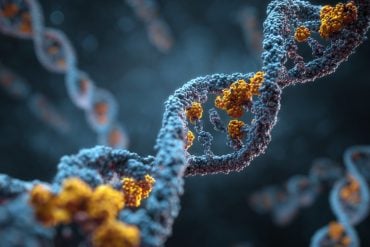Summary: Female rats that experienced early life adversity developed abnormal connections between the amygdala and prefrontal cortex in response to neglect.
Source: Northeastern University
In the early 1990s, more than 100,000 children in Romania were living in overcrowded, under-funded orphanages. They suffered from severe neglect, having little interaction with caretakers.
This lack of nurturing altered the structure and function of their brains. These children developed a host of behavioral and emotional problems that many of them are still coping with today.
Now, neuroscientists at Northeastern are using rats to understand some of the physical changes in the brain caused by such severe neglect.
In a recent paper, the researchers found that female rats, in particular, developed abnormal connections between two areas of the brain in response to neglect. These are the same areas that show abnormal activity in brain scans of children raised in orphanages, as well as those who have suffered from child abuse or other forms of severe maltreatment. Children with this abnormal activity are more likely to develop anxiety later on in childhood or adolescence.

Continue reading at Northeastern University.
Source:
Northeastern University
Media Contacts:
Laura Castañón – Northeastern University
Image Source:
The image is in the public domain.
Original Research: Open access
“Altered corticolimbic connectivity reveals sex-specific adolescent outcomes in a rat model of early life adversity”. Jennifer A Honeycutt, Camila Demaestri, Shayna Peterzell, Marisa M Silveri, Xuezhu Cai, Praveen Kulkarni, Miles G Cunningham, Craig F Ferris, Heather C Brenhouse.
eLife doi:10.7554/eLife.52651.
Abstract
Altered corticolimbic connectivity reveals sex-specific adolescent outcomes in a rat model of early life adversity
Exposure to early-life adversity (ELA) increases the risk for psychopathologies associated with amygdala-prefrontal cortex (PFC) circuits. While sex differences in vulnerability have been identified with a clear need for individualized intervention strategies, the neurobiological substrates of ELA-attributable differences remain unknown due to a paucity of translational investigations taking both development and sex into account. Male and female rats exposed to maternal separation ELA were analyzed with anterograde tracing from basolateral amygdala (BLA) to PFC to identify sex-specific innervation trajectories through juvenility (PD28) and adolescence (PD38;PD48). Resting-state functional connectivity (rsFC) was assessed longitudinally (PD28;PD48) in a separate cohort. All measures were related to anxiety-like behavior. ELA-exposed rats showed precocial maturation of BLA-PFC innervation, with females affected earlier than males. ELA also disrupted maturation of female rsFC, with enduring relationships between rsFC and anxiety-like behavior. This study is the first providing both anatomical and functional evidence for sex- and experience-dependent corticolimbic development.






